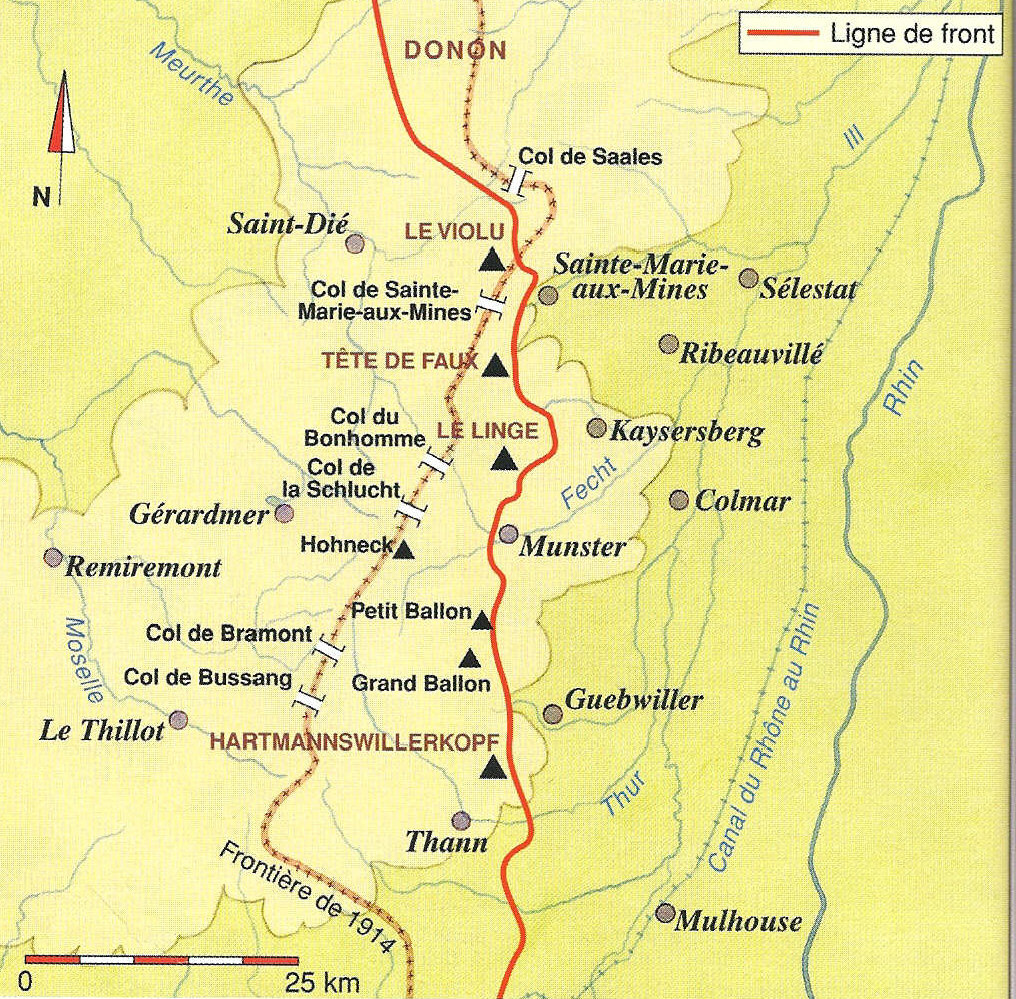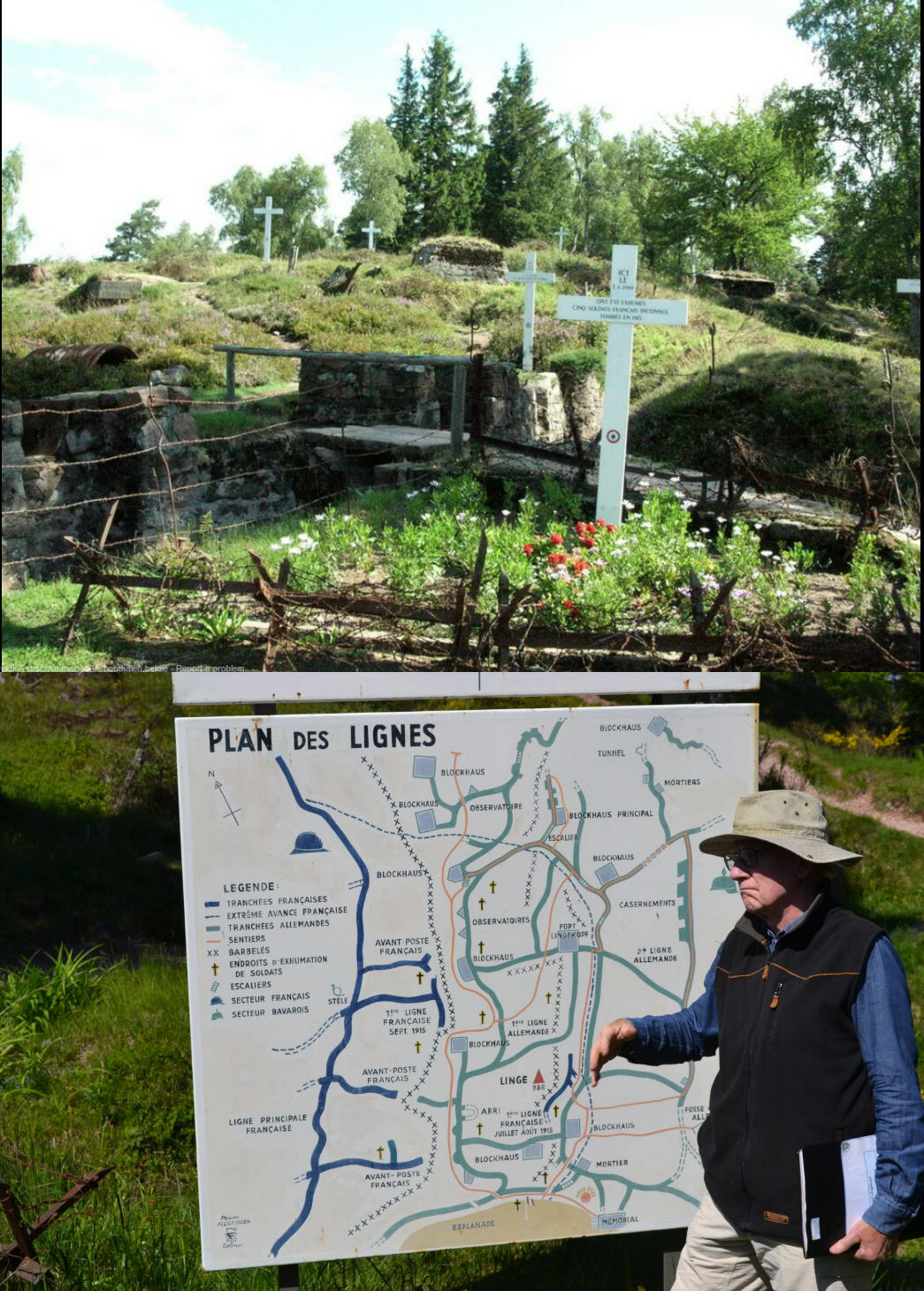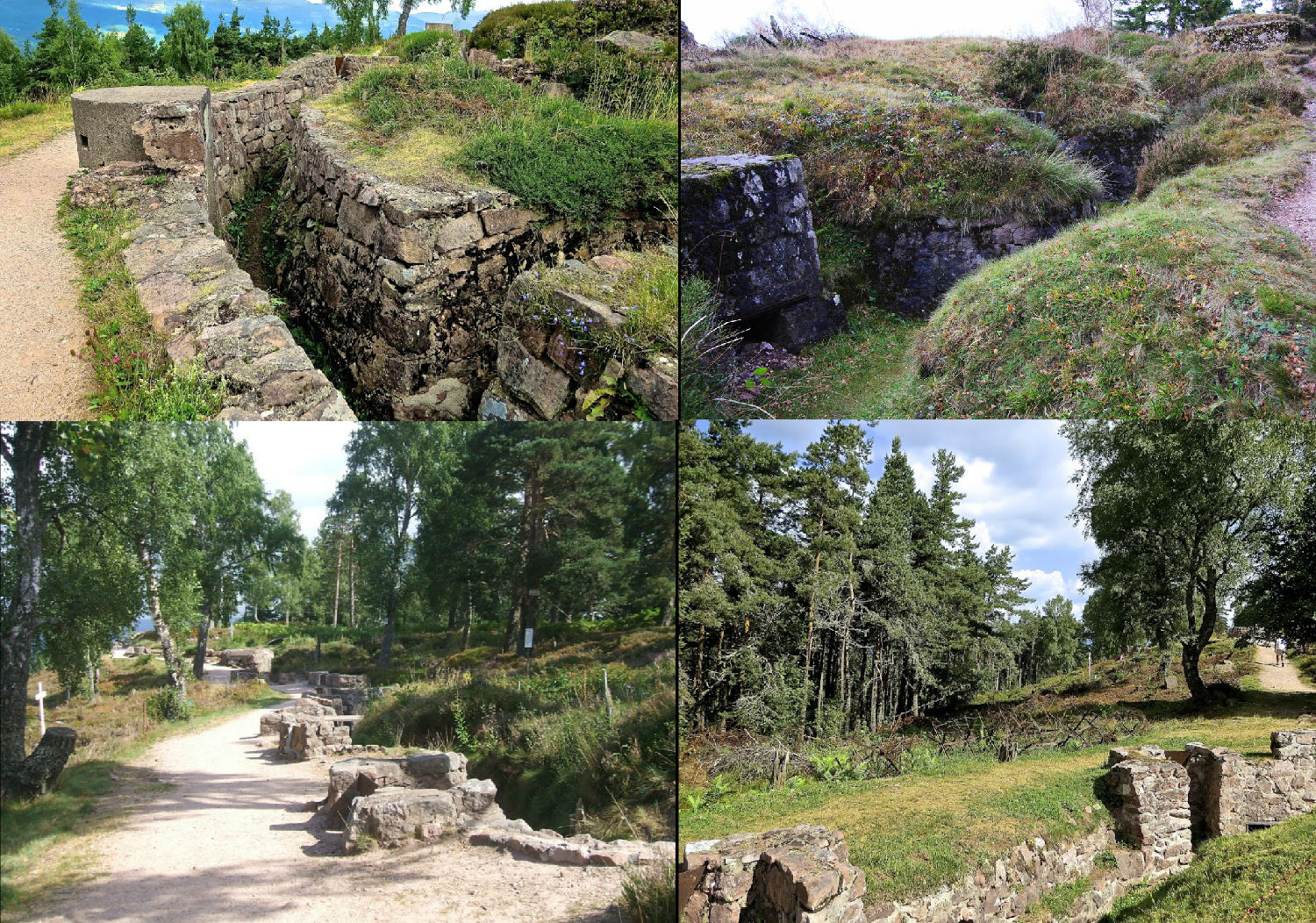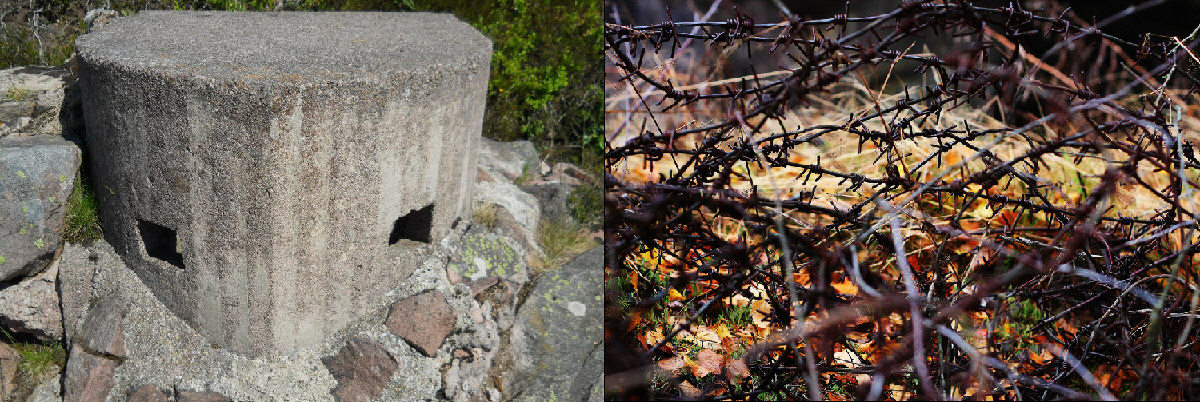The Fighting at Le Linge
The struggle for Le Linge, a hilltop located 14 miles west of Colmar in the Vosges Mountains, was one of the bloodiest battles of the First World War, but is mostly forgotten today. Between 20 July and 15 October 1915, the Germans organized their defense here in order to prevent French troops advancing on Colmar. In 1915 this area was part of the Alsace, which Germany considered its own. The fighting was extremely violent, with 17,000 killed, counting both the French and German losses. Gas and flamethrowers were used here. Subsequently, as both sides came to realize that a major breakthrough in the Vosges was unfeasible, the hill was the site of some of the closest, most intense trench fighting of the Great War.
Click on Image to Expand
The area shown here between the 1914 border and the line of 1915–1918 was the only German territory occupied by the French Army before the Armistice.
Le Linge Today
Click on Image to Expand
The view from the southern entrance to the site; below – a guide shows the trench network.
Click on Image to Expand
Two distinguishing aspect of the Le Linge site: the extensive use of concrete by both sides and the well-preserved barbed wire barricades throughout.
Click on Image to Expand






We discovered this site in the summer of 1985. They had just recently discovered a WW1 body and removed it for proper burial. And they warned about unexploded ordinance off the trails. It was our first WW1 battlefield, and made a lasting impression.
ReplyDeleteThanks for the post - I now look forward to going and visiting
ReplyDeleteDoes someone have a list of units engaged?
ReplyDelete